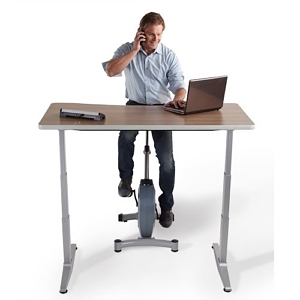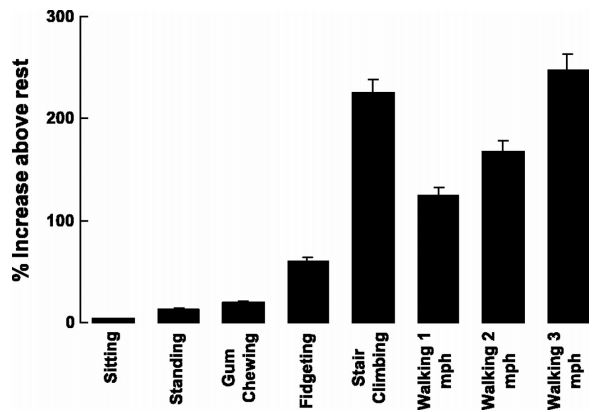The Difference Between a Treadmill Desk and an ‘Exercise Desk’

Perhaps the most common misconception about treadmill workstations is that they are “exercise desks.” Though many people who’ve never used a walking treadmill desk may perceive these terms as synonymous, the difference in semantics goes to the core definition of Non-Exercise Activity Thermogenesis (“NEAT”) versus “activity-based thermogenesis.” It doesn’t help that some treadmill desk marketers even use the term “exercise desk” to capture more search engine traffic.
The idea behind walking at 1 – 2 mph on a treadmill desk is to raise your metabolic rate by roughly 150 percent to 200 percent above normal resting rate (“basal metabolic rate” or “BMR”), keeping your heart rate below the “exercise” range. If you are exercising, you’ll begin to sweat – not something most of us want to do at our desks. More importantly, you’ll likely find that the increased focus you experience when you’re in the NEAT zone turns to focus diffusion as your heart rate climbs higher into the aerobic exercise range.
The graph below, adapted from Mayo Clinic’s Dr. James Levine’s book Move a Little, Lose a Lot, depicts the difference in metabolic rate derived from various activities. As you can see, stair climbing – which is considered true exercise – is roughly equivalent to walking at 3 mph. While some treadmill desk bases are capable of going faster than 2.0 mph, doing so would defeat the purpose of working at a treadmill desk. At that point you might as well take it up to 4 mph (or higher) and get a good sweaty cardio workout – but forget about getting any work done, much less typing with any modicum of accuracy.
NEAT can account for as much as 50 percent of the energy expenditure in active individuals. Studies show that fat gain and loss are highly related to NEAT. In fact, it may be that the key to optimally dieting and sustaining fat loss is to regulate NEAT levels. Levine’s book is a great primer on how to introduce more NEAT activity into your life, including such things as preparing your own meals at home instead of dining out, or walking to the grocery store for fresh produce daily instead of driving there and buying a lot of food at once to take back in your car.
There are various forms of exercise desks in the market that will get your heart rate up, including bike desks such as the LifeSpan C3-DT3 Standing Desk Bike and under-desk ellipticals such as the Cubii. In our opinion, the benefits of using such devices are very different from those that inure to treadmill-desks users, and being able to get serious work done on them is highly questionable. They are fine for doing mindless work or watching movies while getting exercise.
Studies have shown that walking slowly increases blood circulation to the brain, increasing focus capacity. Studies have also shown that the faster we walk, the less capable we are of performing mathematical calculations in our heads. So if you’re ever tempted to bump your treadmill desk speed above 2 mph, remember that your IQ may also come down a little bit with every increment.
Be sure to peruse our detailed expert reviews of all the top treadmill desks on the market.
Check out our synopsis of the latest studies from major medical research institutions on How Many Calories Can You Really Expect to Burn Using a Standing Desk or Treadmill Desk?



0 Comments
Leave a response >